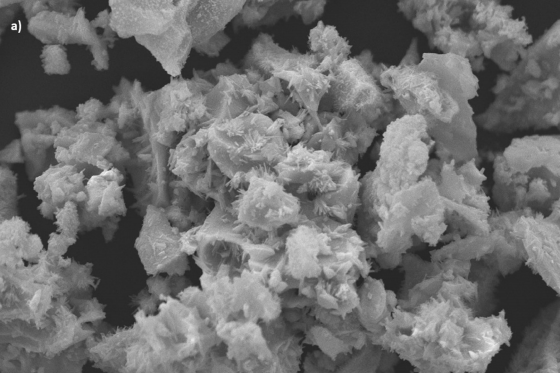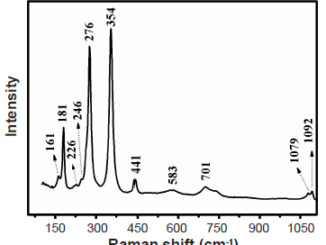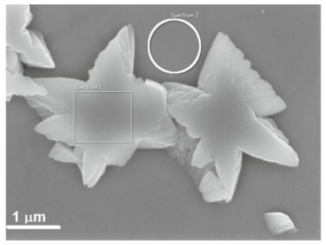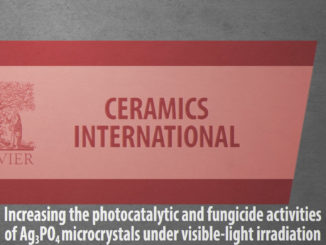
SrSnO3 perovskite obtained by the modified Pechini method-Insights about its photocatalytic activity
Abstract: The use of SrSnO3 as a photocatalyst in different applications has been growing in recent years, particularly for degradation of organic dyes. In the present work, SrSnO3 catalyst was synthesized by the modified Pechini method and applied in the photocatalytic degradation of a textile azo-dye in aqueous solution under ultraviolet irradiation. The dominant photocatalytic species for this system were evaluated, determined from terephthalic acid photohydroxylation and from different scavengers. Moreover, electrochemical data were used to evaluate charge transfer between SrSnO3 and the species involved in the photocatalysis -O-2, H2O and the scavengers. The irradiation time required to achieve 98% decolorization of a Remazol Golden Yellow (RNL) solution was 10 h. The catalyst simultaneously reduced all the absorption bands in the UV-vis spectrum of RNL, suggesting pollutant degradation. Isopropanol, silver and formic acid were all employed to test the importance of different photocatalytic processes and the photohydroxylation of terephthalic acid confirmed the generation of (OH)-O-center dot. A comparison of the SrSnO3 band positions and the potential of relevant redox couples suggests possible mechanisms for (OH)-O-center dot generation from both photogenerated carrier types (electrons and holes), in agreement with the results obtained using the hole/electron scavengers.
Author (s): Teixeira, ARFA; Neris, AD; Longo, E; de Carvalho, JR; Hakki, A ; Macphee, D; dos Santos, IMG
JOURNAL OF PHOTOCHEMISTRY AND PHOTOBIOLOGY A-CHEMISTRY
Volume: 369 Pages: 181-188 Published: JAN 15 2019
PDF: SrSnO3 perovskite obtained by the modified Pechini method-Insights about its photocatalytic activity
DOI: 10.1016/j.jphotochem.2018.10.028




